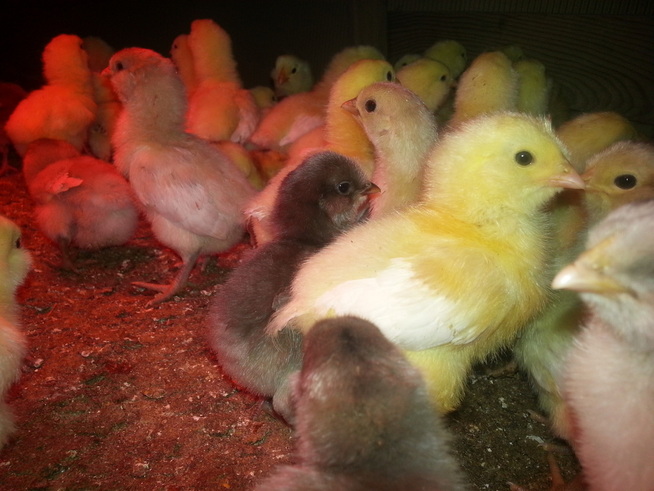
 There are over 100 chicks, 4 turkey poults and about 20 ducklings in the brooder so far. Tomorrow the ducklings need to be separated because they use up all the water and make such a big mess, it just isn't fair to the chicks. The turkey poults do not know how to eat or drink on their own and that is something, when the turkey mother hatches her eggs, she teaches the babies to do. Otherwise, they must learn on their own from watching the chicks or if they are by themselves, their human caretaker must show them by giving them the food and taking them to the water and dipping their beaks into it. It is so much easier when the mothers hatch their babies and care for them, and the babies are so much smarter. Last year, I carefully observed newly hatched chicks. The mothers took them around the barn yard, showing them what food was good, how to drink water and when they got cold, she called them to her and brooded them right where they were. In the first week, the young ones cannot regulate their own temperature yet, and need to be very warm, so the mother broods them very often, but they also are out and about and running over and under grasses and straw. Humans tend to coddle the chicks, not giving them straw, thinking it will cause their legs to splay, but in the real world, they are everywhere. The better mothers watch their babies closely and defend them fiercely. No one dare get too close or she will rush at the intruder and peck hard and scratch and puff herself up to appear a ferocious as she is acting. Human raised chicks miss all that fun. These babies will live in the granary brooder for a month, then be transferred to a hoop coop with a heat lamp in the corner. There they can experience the sunshine and fresh air and learn how to cope with the wind. Some will be kept to breed next year, but most, if not sold, will be put into the freezer for delicious meals in the winter. Their lives are honoured though, and they are loved and appreciated very much. Thank you little feathered friends, thank you so much.
0 Comments
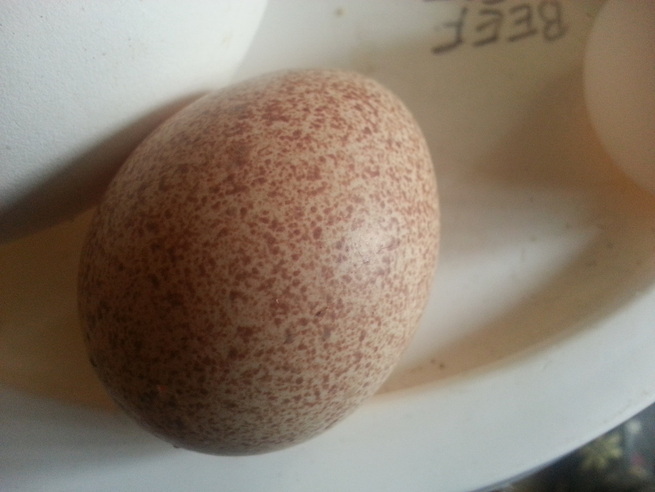 The first hatch is underway. The cost of keeping birds is much less than buying hay for sheep and goats, and the eggs, chicks and adult bird sales far outweigh their upkeep. That is not so with the other animals on the farm, but at least something breaks even! The incubators are not mine, but belong to two different friends. I am splitting the hatch with one friend and the other gets his pick of the birds, so it is a win win situation for me and for them. About 40 mixed duck eggs, Rouen, Saxony, Ancona and Khaki Campbell, plus Muscovy, and 15 Standard Bronze turkey eggs, 18 mixed geese, Tufted Toulouse/Embden/Pomeranian, and chicken, Ameraucana/Partridge and white Chantecler and a few others plus bantams are all in the incubator with the chicks due on April 26 and the waterfowl on May 3 and 5. Muscovy ducks take the longest to hatch, followed by the geese then ducks and chicks the shortest, at 21 days. Some of the hatch has been presold already. About the same time, or a bit later, the farm will be receiving an order from Performance Poultry with specialty birds so there will be waterfowl and chick brooders set up and ready to go. Three separate hatches will be made, with approximately 80 eggs per hatch. After that, if there is still interest, the hatch will be set by order only. Unclaimed birds will be raised and either sent to the processors or kept for layers or for sale as adult birds. In the summer the feed bill is very low because the birds free range and basically feed themselves. This year, the numbers of adult birds are too high for the small farm yard, so they will out to pasture with the sheep so the dogs can also watch over them. With the new fencing, it will be easier to pasture the birds. The fliers go where they wish anyhow, so basically it is the ducks and geese and a few of the chickens that will need supplemental grazing. The benefits of raising the birds are many from fresh pastured eggs to bug control to delicious dinners. And to think that when I began this venture three years ago, I had a terrible bird phobia and could not touch a bird, not even a newly hatched chick, let alone go in a coop. Now I can, though the odd time, I still get prickles on the back of my neck when the birds fly by my head. I actually like them now, especially the comical ducks. They are my favourites, hands down. The egg pictured is from a Standard Bronze turkey, and I even like them. 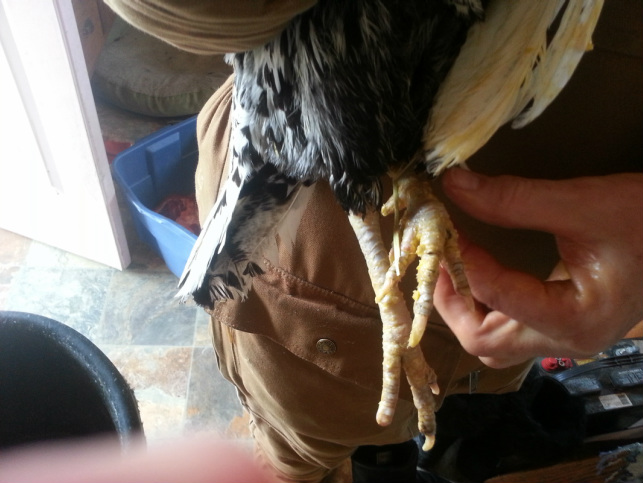 Please note, this is not a statement of generality, but about three specific breeders in this area. I bought some chickens from a lady who advertised them on the local internet buy and sell type of site. She delivered them after dark. I was newer to animals and thought not too much of the scenario one way or the other, but the next day, I saw that the chickens were not quite right. They were sick, had lice crawling on them and a few had very rough scaly legs and feet. After reading a lot, it was determined that the condition on the feet was scaly leg mites and that they were highly contagious. The chickens were quarantined in an 8 x 10 open wire coop covered with a tarp, but it was still summer, so that was adequate. They could not free range until they were treated and better. Some died. Some survived and got better, but this little hen, the Silver Spangled Hamburg, a pretty little thing with blue ears and black and white feathers, did not improve. I treated her every which way and now, a year later, she still had the mites or whatever was causing her problems. So, I caught her and applied the new cream I made for people skin. It is a wonderful mix of shea and cocoa butter, coconut oil, and several other oils, all noted for skin rejuvenation and lavender essential oil, for calming the skin. The butter was applied and rubbed into her legs and feet. She had lost a nail and one toe to this condition already. I did not know what else to give her since she had had a gamut of medicines and applications over the past year. I think this will work. The roosters I got last summer from a different breeder all were sick, and had to be destroyed. I do not quite understand why a breeder would sell infected birds, or as the first batch was, with lice and mites and who knows what else. The birds get sick from being raised in crowded conditions that are not clean. Birds need plenty of sunshine and fresh air and clean coops where disease and pests cannot reproduce and multiply. Last summer, I also got some ducks from a different breeder and all but one out of eleven have died. They were likely inbred, that is bred to the brothers and sisters, which creates some weakness in the stock. So, live and learn. I am not condemning every breeder in this area, but with three bad experiences, I won;t be trying any others unless I can go to the facilities and inspect the birds where they are raised in order to be satisfied that all is well and the birds are raised in a clean manner with plenty of fresh air. This poor little hen...well, hopefully my magic potion will help her recover fully and finally so she can be well and happy again. 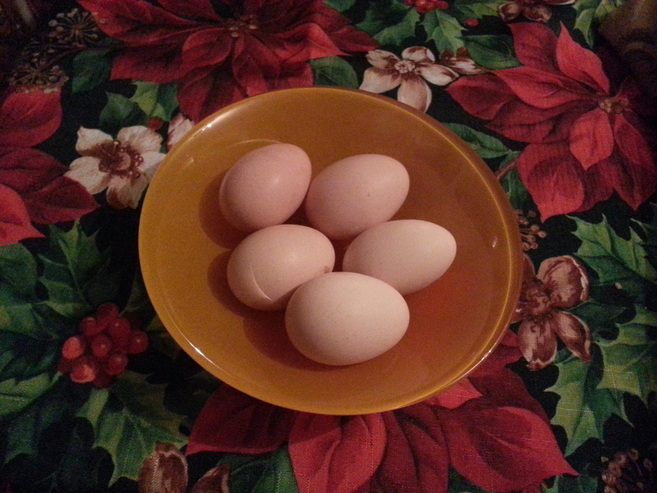 These eggs are Partridge Chantecler. The foremost one was laid today and so far is the largest laid. The birds are young pullets and have just started to lay. They do not receive any supplemental light, though there is a red heat lamp in their coop. These eggs are Partridge Chantecler. The foremost one was laid today and so far is the largest laid. The birds are young pullets and have just started to lay. They do not receive any supplemental light, though there is a red heat lamp in their coop. Here at the Fat Ewe Farm, many breeds of chickens have been tested. Black Australorp, Columbian Wyandotte, Jersey Giant, Speckled Sussex, Silver Spangled Hamburg, Japanese Bantam, Blue Orpington, and now Ameraucana and both, white and Partridge Chanteclers. The reason most of them did not make the grade is because they were not winter hardy. For example, the combs on the Jersey Giants are large, especially the roosters and they froze in the winter. The Japanese Bantams were not hardy enough and their feet froze. The Silver Spangled Hamburg is doing fine, and she is a good layer, but the rooster version is not nearly as hardy. The Orpington still here was kept because the dogs got her and ripped the skin off her back when they were young, so when the others went to the processor, she got to stay. She is sort of a pet, if there is a pet chicken on the farm. Her comb is not red or pink now though, and I suspect she may have worms. That is another subject because chemical wormers are only used as a last resort to save an animal. The hardiest birds hands down are the white Chanteclers. They were bred in Canada by the monks, and his idea was to produce a very hardy, good sized dual purpose (meat and egg) bird. They are not pretty like some of the other breeds, just plain white with small combs and no wattles (hangy down thingys by their beaks). Those parts are what freeze on other breeds, so it is a good thing not to have them. But, they have not layed eggs this winter. The Partridge Chanteclers have layed a few and just in the last week, there have been two or three eggs a day. The eggs are small because the chickens are pullets, that is, they are young and just starting. Laying eggs takes a bit of practice and patience and hurts at first, like having a baby. So small eggs are better to start with than big ones. I am hoping the white Chanteclers will also start laying and the Ameraucanas, which lay blue/green eggs will too. Those white Chanteclers have been sleeping in the waterfowl house, which is an open three sided deep shelter. It is not warm in there, but it is protected from the wind and no snow gets in. The birds could go into either coop, but they do not seem to mind the cold. Bonus points to the white Chanteclers, pretty or not, for being winter hardy. Now let's see some eggs. There is a rooster for the Ameraucanas and one for the white Chanteclers. I am hoping both will breed the others and I will end up with a super hardy winter tough mixed flock laying some blue and some brownish eggs. The bantams are crosses and they are as hardy as the Partridge Chanteclers, plus they have been laying the odd egg as well. Even though I check the nesting boxes frequently, at these frigid temperatures, the eggs have been freezing before I can harvest them, but I have managed to collect most. If I see a hen in the box, I go back and check often. So far, it is working. Part of the sustainability of raising chickens is that no supplemental light or heat should be necessary for the right flock and they should still produce some eggs in winter. In the old days, the coops were hardly insulated, if at all, and the chickens survived just fine. Some were not watered, but left to eat the snow and they do do that, but I still give them water. The bantams do not drink it, preferring the snow. The only problem with the bantams is that they are so light, they do not produce a meat carcass. Otherwise, they are the best foragers and are very independent, all summer feeding themselves. Next winter, a huge manure/compost pile will be located in the chicken yard. The idea is that the heat from the pile will keep it thawed all winter and the chickens can forage and eat the worms and bugs and other tasty morsels from it, reducing their need for grain based food in winter. If it works, perhaps, grain can be eliminated completely. The white Chanteclers are the breed to choose for winter hardy birds. Hands down. Second are the Ameraucanas and the Partridge Chanteclers, tied. Thank you chickens for your eggs, your bodies and your foraging. The farm would not be the same without you. Captain Morgan was missing the other day and he called to me from under the huge spruce tree in the front yard, where I picked him up and put him in with Peter Rabbit. He has been Peter's room mate before, and they got along well enough. Captain morgan cannot breed anymore, so for a while, he and his wife were swapping in the tent next door, in the hope that she would start to lay some eggs. No such luck.
Then Sheila, Morgan's second wife went missing. Not a trace, not a feather was found. But alas, there she was back in the barn behind the pregnant goat, where Captain Morgan and her lived for some time. They quite liked the place, especially the privacy, but they despised the fact that there were no windows and they were always in the dark so to speak, so they moved out. Sheila decided she preferred the dark to the suitor in the wife swapping tent, though, and she was found safe and sound back home. So Captain Morgan and Sheila are back in their first apartment together with Peter Rabbit, their room mate. The Faverolle hen has joined them, because, although she does not enjoy being a party girl, the boys think she does, and they gang rape her, so she stays on her perch inside, barely eating and drinking enough to stay alive. Every time she is outside, they jump her bones. Sheila is a little worried that Faverolle will steal Captain Morgan's affections, so she has pecked her a few times to put her in her place, but she needn't worry. The good Captain is quite happy with one wife these days, even in their sexless marriage. Anyhow, the happy couple is reunited and now they are sharing their tent with not just Peter but the Faverolle girl. The Captain kind of enjoys this (don't tell Sheila). |
Categories
All
AuthorFluffy writes daily about the experiences on the farm and with the bed and breakfast patrons. Archives
October 2020
|


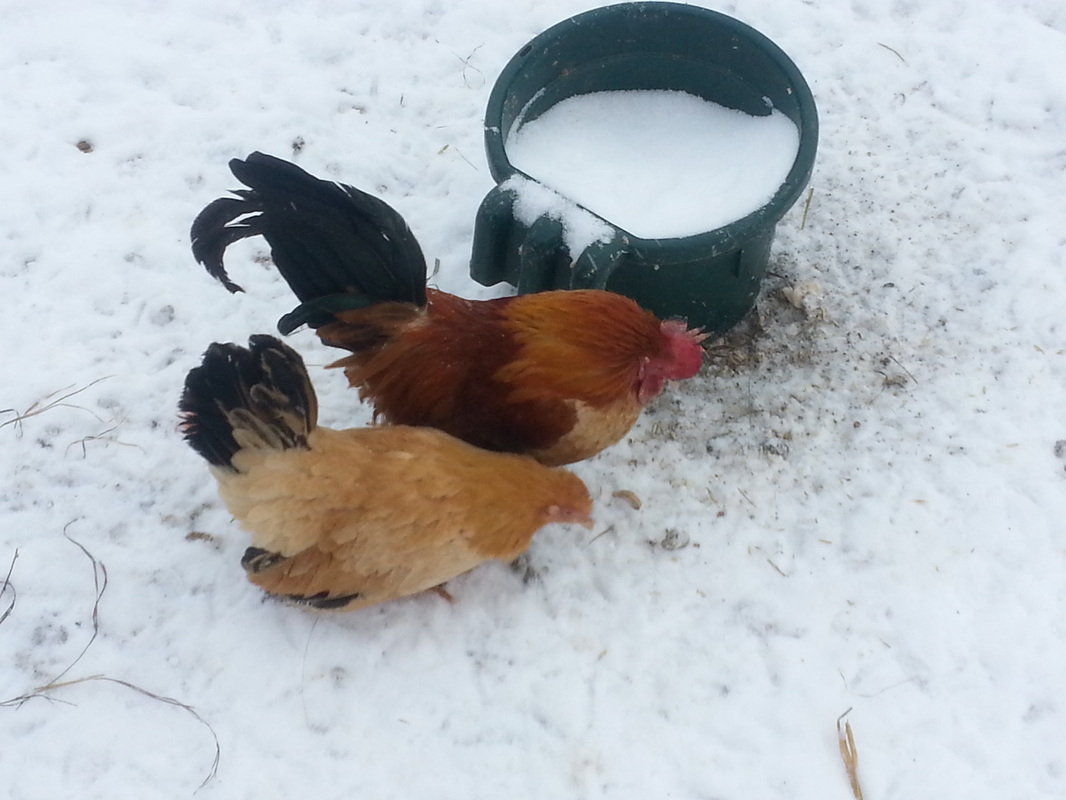

 RSS Feed
RSS Feed